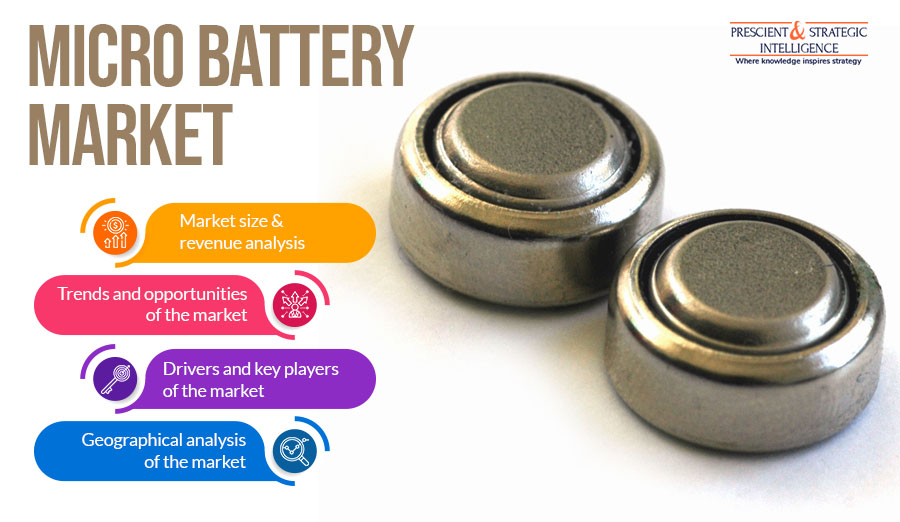Medical device manufacturers are increasingly integrating internet of things (IoT) technology in insulin pumps and cardiac monitoring systems to enable remote monitoring of patients. The increasing complexities in the human body and the rising prevalence of chronic ailments, such as cancer, diabetes, cardiovascular diseases (CVDs), and neurological disorders, are encouraging healthcare companies to adopt such state-of-the-art technology. Thus, the increasing adoption of IoT in medical devices, to reduce their sizes, will propel the usage of micro batteries, globally.
Moreover, the burgeoning demand for wearable devices will drive the micro battery market at a robust CAGR, of 18.4%, during the forecast period (2019–2024). According to P&S Intelligence, the market revenue is expected to surge from $418.2 million in 2018 to $1.1 billion by 2024. Wearable devices, such as smartwatches, wireless headsets, and fitness bands, use micro batteries as a power source. The booming demand for fitness bands and fitness trackers can be credited to the mounting public awareness on health and improving lifestyles, across the world.
Currently, micro battery manufacturers are largely focusing on the deployment of advanced technologies and portfolio expansion to provide new and improved products to their customers. Additionally, the manufacturers are also engaging in mergers and acquisitions to reach out to a wider customer base. Some of the major companies adopting these strategic measures include Panasonic Corporation, The Swatch Group Ltd., VARTA AG, Maxell Holdings Ltd., GPI International Ltd., Murata Manufacturing Co. Ltd., Berkshire Hathaway Inc., Energizer Holdings Inc., TOSHIBA LIFESTYLE PRODUCTS & SERVICES COPORATION, and Seiko Holdings Corporation.
The type segment of the micro battery market is categorized into LR (alkaline), CR (lithium), SR (silver oxide), and others, such as vanadium rechargeable lithium battery (VL Series), zinc air battery, and rechargeable lithium battery (ML Series). Under this segment, the CR (lithium) category accounted for the largest market share in 2018. This was on account of the extensive use of CR (lithium) batteries in electronic toys, calculators, and medical devices, owing to their higher energy density and lower self-discharge rate than other micro battery types.




